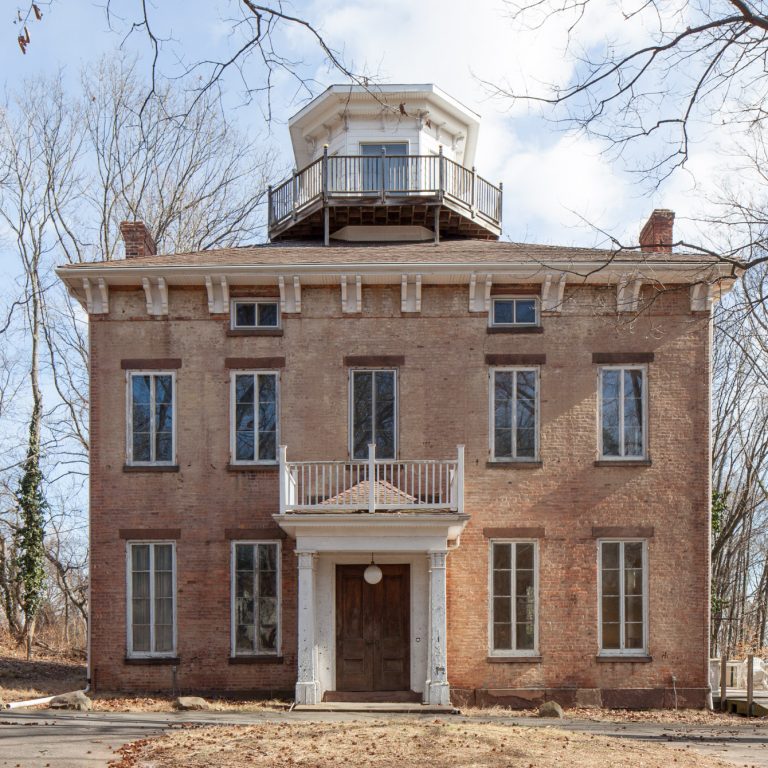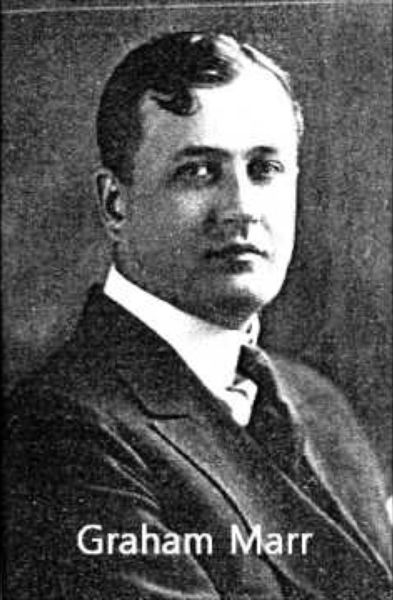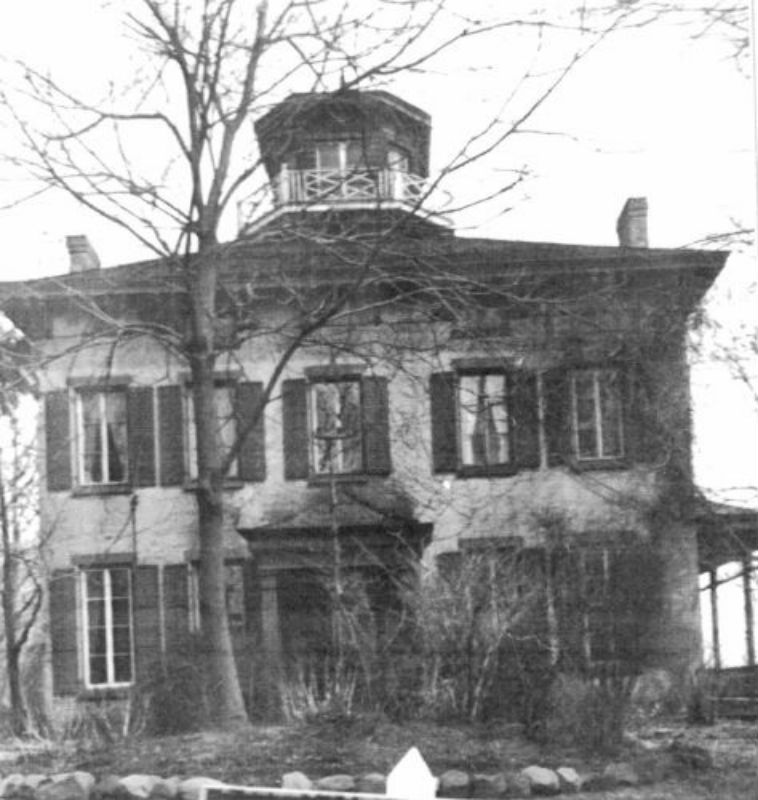
Marr Lodge
overview
Opera singer Graham Marr owned this mid-19th century house, which he renamed “Marr Lodge,” from 1925 until his death in 1961 (his partner, landscape painter Norman Robert Morrison, lived here until 1968).
From 1978 to 1985, retired firefighter Robert R. Wakeham and his partner Thomas E. Sweeney renovated the home, with Wakeham continuing to do so until his death in 2010.
History
Billed by Capitol Records in the late 1910s and early 1920s as “America’s foremost operatic baritone,” opera star Graham Marr (Addison Graham Marr; 1877-1961) was born in Shamokin, Pennsylvania, and was a graduate of Princeton and the Columbia School of Architecture. While he was at Columbia, Marr began taking voice lessons. In 1907, he gave up architecture to become a professional singer, appearing initially in vaudeville and musical comedy. A year later, he began training for major baritone roles with the English opera impresario Charles Manners, and from 1909 to 1913 he toured with the Moody-Manners Grand Opera Company in Europe, Africa, North America, and Australia. He returned to the United States in 1913, where he sang with most of the major opera companies of the day, including the Chicago, Boston, San Carlo, and Manhattan Opera Companies. (In New York City, he appeared at the Brooklyn Academy of Music and Manhattan Opera Company theater on 34th Street but never at the Metropolitan Opera.) He was especially well known for his role as Zurga in a revival of Les Pêcheurs de Perles (The Pearl Fishers); in 1916, he made one of the first recordings of the duet “Au fond du temple saint” (In the depths of the temple) with tenor James Harrod, earning praise from the Musical Courier for “the virile resonance” of his baritone which blended with “the mellow sweetness of Harrod’s tenor” to produce “a beauty of harmony as rare as it is wonderful.”
In 1925, with his career drawing to a close, Marr purchased a picturesque Italianate-style villa at 190 Meisner Avenue, located on Staten Island’s Lighthouse Hill. He renamed the villa “Marr Lodge.” Marr and his partner, landscape painter Norman Robert Morrison (1900-1968), made several improvements to the house, including converting the former dining room to a drawing room/theater, where they staged amateur productions. Marr died in 1961; Morrison, who had become an antiques dealer, lived here until his death seven years later.
Robert R. Wakeham, a retired firefighter who operated an antiques business in Manhattan with his lover, Thomas E. Sweeney, bought the house in 1978. They undertook extensive interior and exterior renovations, including the construction of a new balustraded terrace in place of the south porch, and furnished the house with their extensive collection of antique clocks and other antiques. Following Sweeney’s death in 1985, Bob Wakeham continued to work on the house as “a reminder of the 21 years he had shared with his late partner.” He died here in 2010.
The New York City Landmarks Preservation Commission designated the house a New York City Landmark in 2007; the accompanying designation report includes Marr and Morrison’s and Sweeney and Wakeham’s narratives in the house’s history.
Entry adapted by Amanda Davis, project manager (July 2018), from text in Gale Harris, "Nathaniel J. and Ann C. Wyeth House Designation Report" (see below).
NOTE: Names above in bold indicate LGBT people.
Building Information
- Architect or Builder: Unknown
- Year Built: c. 1856
Sources
A New Marr Record,” Musical America, v. 25 (Apr. 28, 1917), 33.
Addison Graham Marr, ‘01,” Princeton Alumni Weekly, v. 62 (Jan. 26, 1962), 17.
Addison Graham Marr, B.S.,” Princeton University Class of 1901, Twentieth Year Record of the Class of 1901.
Christopher D. Brazee, Gale Harris, and Jay Shockley, “150 Years of LGBT History,” New York City Landmarks Preservation Commission, 2013.
Gale Harris, Nathaniel J. and Ann C. Wyeth House Designation Report (New York: Landmarks Preservation Commission, 2007).
James G. Ferrari, “Romantic Villa a Crowning Achievement on Lighthouse Hill,” Staten Island Advance, April 29, 2010.
John M. Annese, “Cousin Accused of Raiding Sick Island Man’s Finances,” Staten Island Advance, November 25, 2009.
Sally Goldenberg, “Lighthouse Hill Home a Landmark to Pols, a Memento to Man, Staten Island Advance, September 5, 2007.
Do you have more information about this site?
This project is enriched by your participation! Do you have your own images of this site? Or a story to share? Would you like to suggest a different historic site?


